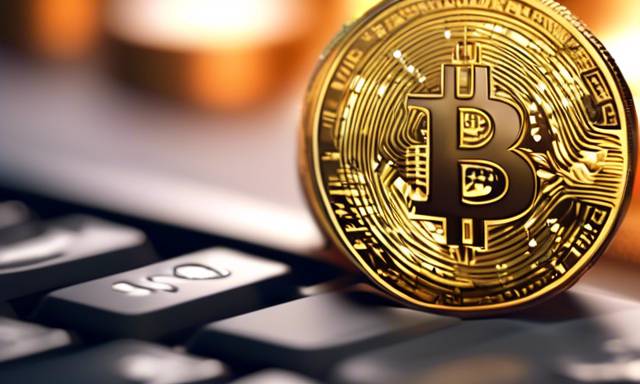Analyzing Bitcoin’s Response to Fed’s Rate Cut 🏦
The recent decision by the Federal Reserve to lower interest rates has stirred a reaction in the Bitcoin market. Initially, Bitcoin showed a tepid response but later gained momentum with the opening of Asian markets, illustrating the interconnectedness of traditional finance and cryptocurrency. This year, crypto investors are keenly observing how such economic decisions affect their holdings in an ever-volatile market.
Federal Reserve: Interest Rate Reduction and Bitcoin Dynamics 📉
On the previous day, the Fed announced a reduction in interest rates by 50 basis points, aligning with market forecasts. This cut marks a significant shift in policy, considering the Fed had been gradually increasing interest rates since March 2022 in response to rising inflation. The last hike occurred in July, when rates hit a two-decade high.
For over a year, interest rates have remained elevated, although there were expectations for a modest reduction earlier this July. At a recent press conference, Jerome Powell, the Fed chairman, expressed that had they anticipated the August labor market conditions, a cut could have occurred as early as July.
The markets anticipated a 50-point reduction instead of the more modest 25, and this forecast turned out to be accurate, generating initial optimism. However, a cautious tone in the accompanying documentation detailing future interest rate predictions introduced some uncertainty. While market participants expected multiple cuts through 2025, the Fed forecast suggested fewer cuts, causing some of the initial excitement to wane.
Key Insights from Powell’s Conference 🎤
During the press conference held half an hour after the announcement, Powell provided clarity on the rate-cut scenario. He stated that the forecast described in the document should be viewed as an estimation rather than a definitive prediction. This indicates a possibility of more favorable outcomes, depending on how economic conditions unfold and new data emerges in the forthcoming months.
Moreover, Powell dismissed concerns regarding an imminent recession in the United States and provided reassurances about the stability of the labor market. Overall, he painted a relatively positive picture, albeit with a few minor concerns. However, the American markets maintained a cautious stance, reflecting skepticism about merely optimistic forecasts.
Bitcoin’s Reaction Following the Rate Cut 📈
Prior to the rate cut announcement, Bitcoin was trading slightly below $60,000. As news broke, its price surged to $61,000, only to dip back to slightly above $60,000 after a thorough analysis of the Fed’s documentation regarding future expectations. U.S. stock markets wrapped up the day in marginally negative territory, mirroring Bitcoin’s slight downturn.
In contrast, the Asian stock markets reacted positively during the night session. On the day following the rate cut, even the Hang Seng Index of Hong Kong and Japan’s Nikkei reported encouraging gains, further bolstering Bitcoin’s price, which climbed to exceed $62,000.
This positive movement in Asian markets may have also stemmed from a delayed reaction to Powell’s assurances, as they took some time to fully digest the overall optimistic tone in his remarks.
Current Market Reaction and Seasonal Trends 📊
Interestingly, market analysts had speculated that September 18 might not be the ideal day for Bitcoin’s price to react significantly; rather, expectations rested on September 19. Markets often exhibit cyclical patterns related to seasonality and investor behavior, which can fluctuate based on various external influences, including weather patterns.
September frequently presents challenges due to its historical association with low liquidity. By contrast, October is viewed more favorably, sometimes dubbed “uptober,” thanks to its tendency to witness favorable market conditions.
Market participants are well aware of these cyclical trends that have persisted for decades, and they tend to position themselves accordingly. Historically, following each U.S. presidential election, Bitcoin has typically experienced a bullish trend lasting about a year, often coinciding with halvings that also take place in election years (2012, 2016, and 2020).
This year is significant, given that a halving has occurred and the U.S. elections are scheduled for November 5. Many believe that history might echo itself, creating favorable conditions for Bitcoin. While there is no certainty in market predictions, established patterns suggest a possible optimistic route ahead.
Conclusion: Future Outlook 🌅
Overall, the backdrop of interest rate adjustments, along with historical market behaviors and seasonal influences, all play critical roles in shaping the future of Bitcoin and other cryptocurrencies. As you continue to monitor the market’s reaction to fundamental economic changes, understanding these dynamics becomes increasingly essential in navigating your crypto investments.





 By
By
 By
By
 By
By
 By
By
 By
By